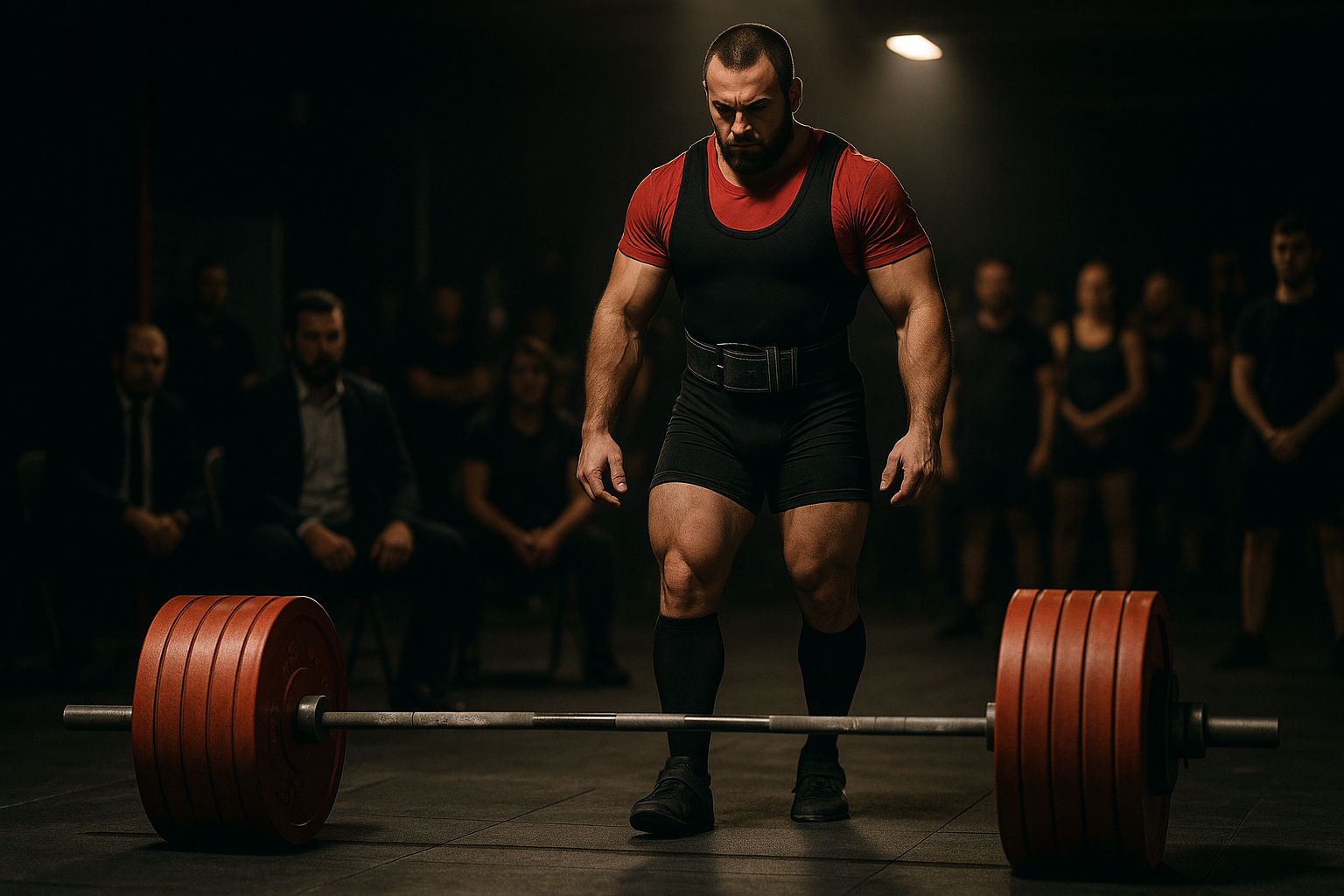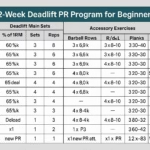Master the art of powerlifting competition preparation with this comprehensive guide to peaking strategies, training adjustments, and meet-day execution.
What is Peaking in Powerlifting?
Peaking is the systematic process of preparing your body and mind to perform at maximum capacity on competition day. Unlike general strength training, peaking involves strategically reducing training volume while maintaining intensity to ensure you’re fresh, strong, and technically sharp when it matters most.
The peaking phase typically begins 4-6 weeks before your competition and focuses on three key objectives: maximizing strength expression, perfecting technique under heavy loads, and optimizing recovery for peak performance.
The Science Behind Peaking
Peaking works by managing two critical systems: your muscular system and central nervous system (CNS). During regular training, high volume creates fatigue that masks your true strength potential. The peaking process removes this fatigue mask through strategic volume reduction while maintaining neural drive through heavy singles and doubles.
Research shows that strength can be maintained for 3-4 weeks with minimal volume, provided intensity remains high. This phenomenon, known as the “detraining paradox,” allows powerlifters to feel stronger and more explosive as they approach competition day.
6-Week Peaking Timeline
Weeks 1-2: Volume Reduction Phase
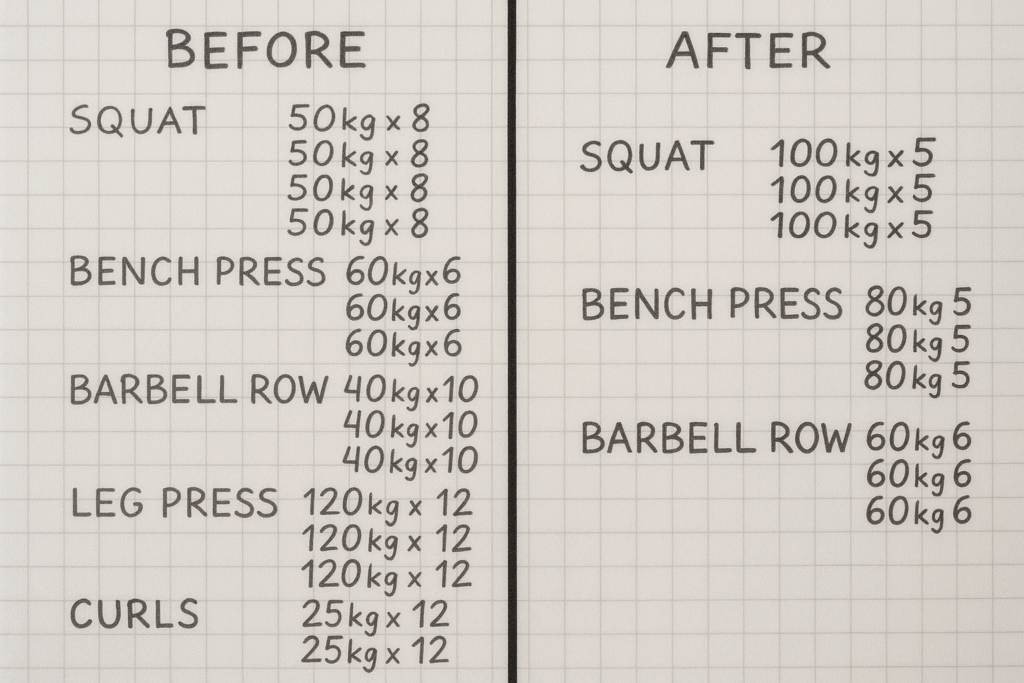
Begin reducing training volume by 40-50% while maintaining your heaviest working weights. Focus on singles and doubles at 90-95% of your current max. This phase helps your body begin recovering from accumulated training stress while keeping your nervous system primed for heavy lifting.
Training frequency can remain the same, but session duration should decrease significantly. Accessory work should be minimized to only the most essential movements that directly support your competition lifts.
Weeks 3-4: Intensity Focus Phase
This phase emphasizes opener and second attempt practice. Train your competition commands and timing while working with weights you’ll see on meet day. Practice your competition routine, including warm-up timing, equipment adjustments, and mental preparation techniques.
Volume drops to 20-30% of normal training levels. Focus on movement quality over quantity, ensuring every rep reinforces proper competition technique.
Weeks 5-6: Competition Preparation Phase
The final two weeks involve minimal training volume with emphasis on opener practice and technical refinement. Most sessions should feel easy, designed to maintain movement patterns without creating fatigue.
4-Week Peaking Program Structure
| Week | Volume Reduction | Intensity Focus | Key Activities | Recovery Priority |
|---|---|---|---|---|
| Week 1 | 30-40% reduction | 85-95% 1RM | Heavy singles, reduce accessories | Maintain normal sleep, add recovery methods |
| Week 2 | 50-60% reduction | 90-100% 1RM | Opener practice, competition commands | Increase sleep quality, massage/stretching |
| Week 3 | 70-80% reduction | Opener/2nd attempts | Full competition simulation | Prioritize 8+ hours sleep, stress management |
| Week 4 | 85-90% reduction | Opener only | Light movement, mental preparation | Complete rest 2-3 days before meet |
The Ultimate 5-Week Powerlifting Peaking Program: Peak Performance When It Matters Most
Attempt Selection Strategy
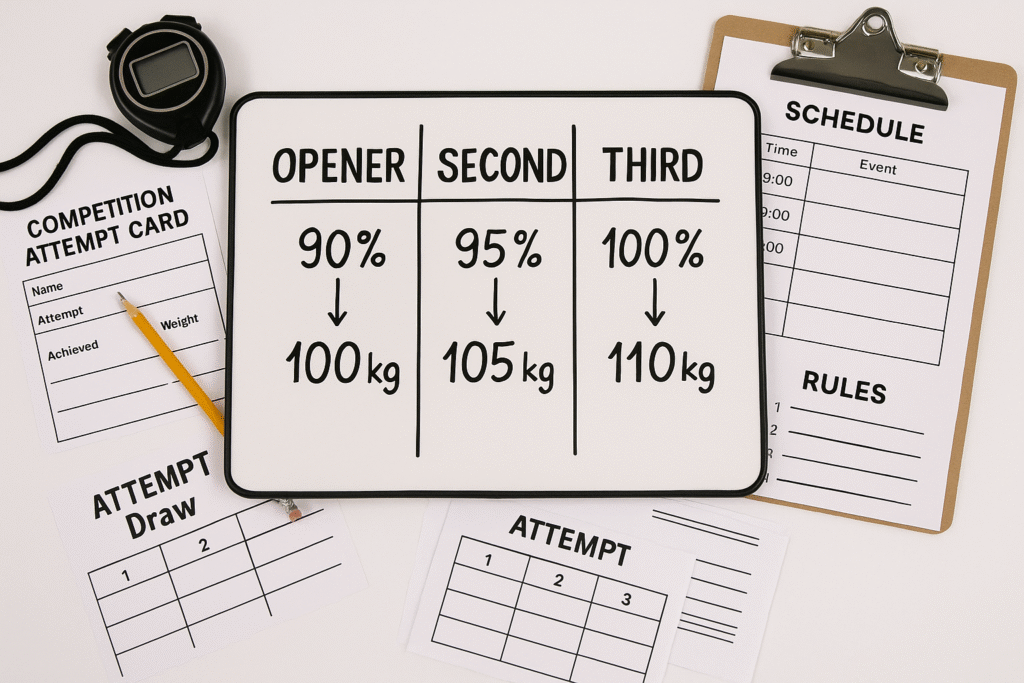
Proper attempt selection can make or break your meet performance. Your opener should be a weight you can hit for a triple on your worst day – typically 90-92% of your current max. This ensures you get on the board and build confidence for heavier attempts.
Second attempts should target 100-102% of your current max, representing a small but achievable personal record. Third attempts are where you take calculated risks, typically 105-108% of your current max, depending on how the first two attempts feel.
Conservative attempt selection often yields better results than aggressive programming. Missing attempts creates negative momentum and can affect subsequent lifts. Plan for success, not just maximum numbers.
Mental Preparation and Visualization

Mental preparation is equally important as physical preparation during the peaking phase. Develop pre-lift routines for each movement that you can execute consistently under pressure. Practice these routines during your peak training sessions until they become automatic.
Visualization techniques help prepare your nervous system for competition demands. Spend 10-15 minutes daily visualizing successful competition lifts, including the sights, sounds, and feelings of a perfect competition day.
Stress management becomes crucial as competition approaches. Develop coping strategies for competition nerves, including breathing techniques, positive self-talk, and focus cues that redirect attention to technical execution rather than outcome anxiety.
Recovery and Nutrition During Peaking
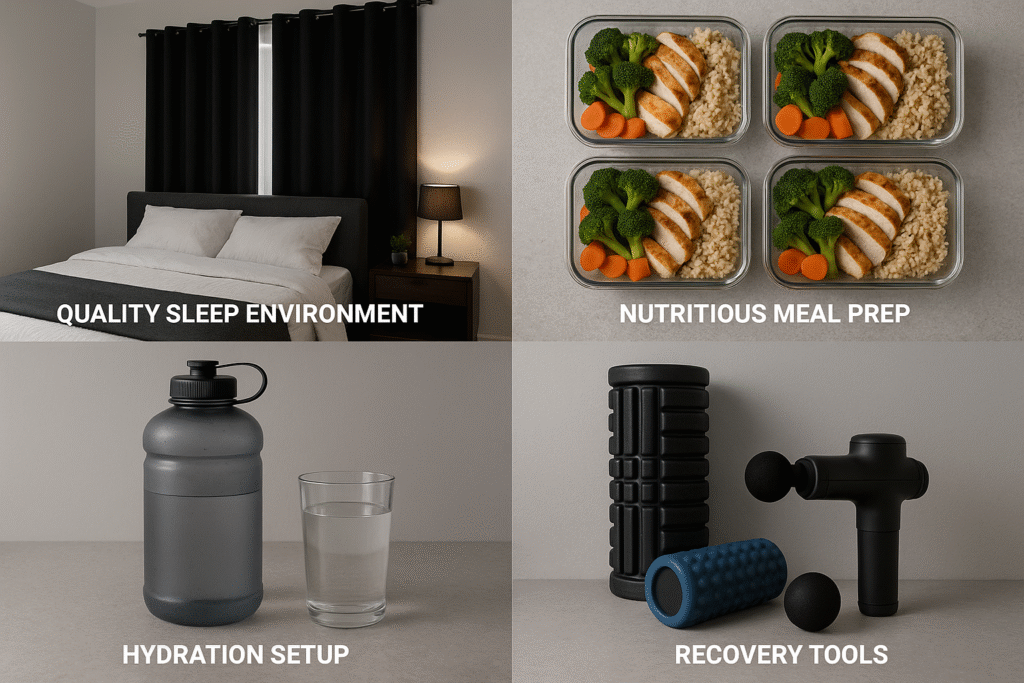
Recovery quality becomes paramount during the peaking phase. Prioritize 8-9 hours of quality sleep nightly, as sleep directly impacts strength, reaction time, and decision-making ability. Create a consistent sleep schedule and optimize your sleep environment for maximum recovery.
Nutrition should focus on maintaining energy levels and supporting recovery rather than dramatic changes. Avoid experimenting with new foods or supplements during this period. Maintain adequate carbohydrate intake to support high-intensity training and ensure proper hydration throughout the peaking process.
Stress management extends beyond training to include work, relationships, and lifestyle factors. The peaking phase is not the time for major life changes or additional stressors that could interfere with competition preparation.
Competition Day Execution
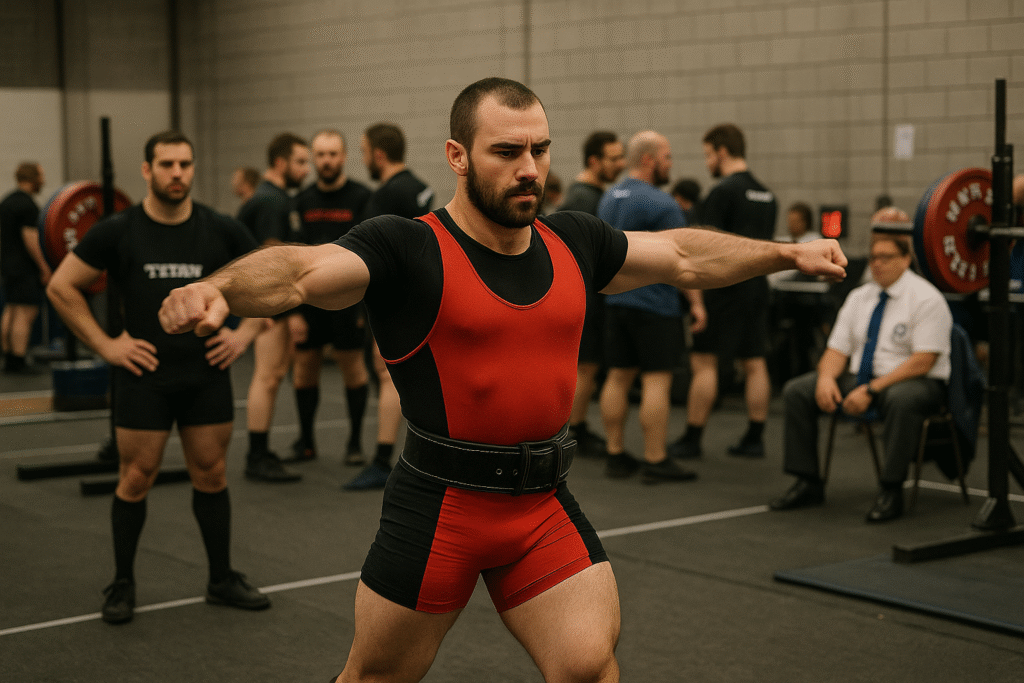
Meet day success depends on executing a well-rehearsed plan rather than making last-minute adjustments. Arrive early to familiarize yourself with the venue, equipment, and competition flow. Stick to your practiced warm-up routine and timing regardless of how other competitors are preparing.
Warm-up timing is critical for peak performance. Begin your warm-up approximately 45-60 minutes before your first attempt, progressing through predetermined percentages to arrive at opener weight feeling confident and prepared.
Between attempts, maintain focus through your established routines while staying relaxed and conserving energy. Avoid getting caught up in other competitors’ performances or letting meet environment distractions affect your preparation.
Common Peaking Mistakes to Avoid
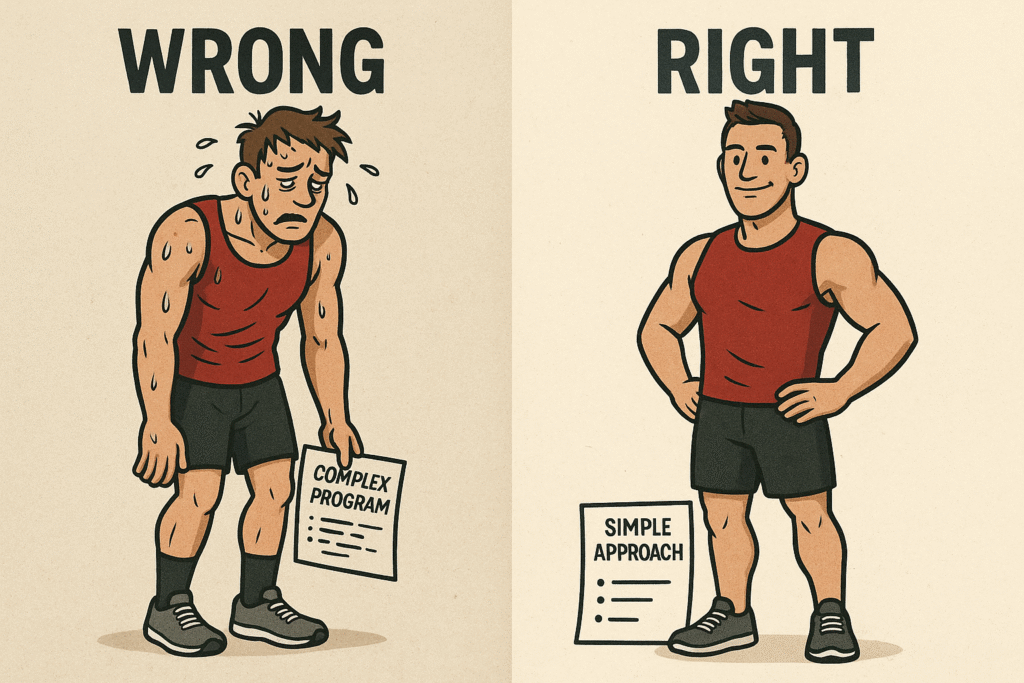
Overcomplicating the peaking process is the most common mistake powerlifters make. More is not better during this phase. Resist the urge to add extra sessions, new exercises, or dramatic technique changes close to competition.
Another frequent error is inadequate recovery prioritization. The peaking phase requires discipline to rest when your body feels capable of more training. Trust the process and remember that feeling slightly undertrained is preferable to feeling overtrained on competition day.
Avoid experimenting with new equipment, techniques, or strategies during the final weeks. Competition preparation should reinforce existing strengths rather than developing new ones.
Measuring Peaking Success
Success indicators during peaking include feeling increasingly fresh and explosive during training sessions, improved sleep quality, reduced muscle soreness, and growing confidence with competition weights.
Technical improvements often emerge during proper peaking as fatigue dissipates and movement efficiency increases. Your lifts should feel smoother and more controlled as competition approaches.
Mental readiness manifests as reduced anxiety about competition weights and increased confidence in your preparation and ability to execute your competition plan.
Post-Competition Recovery
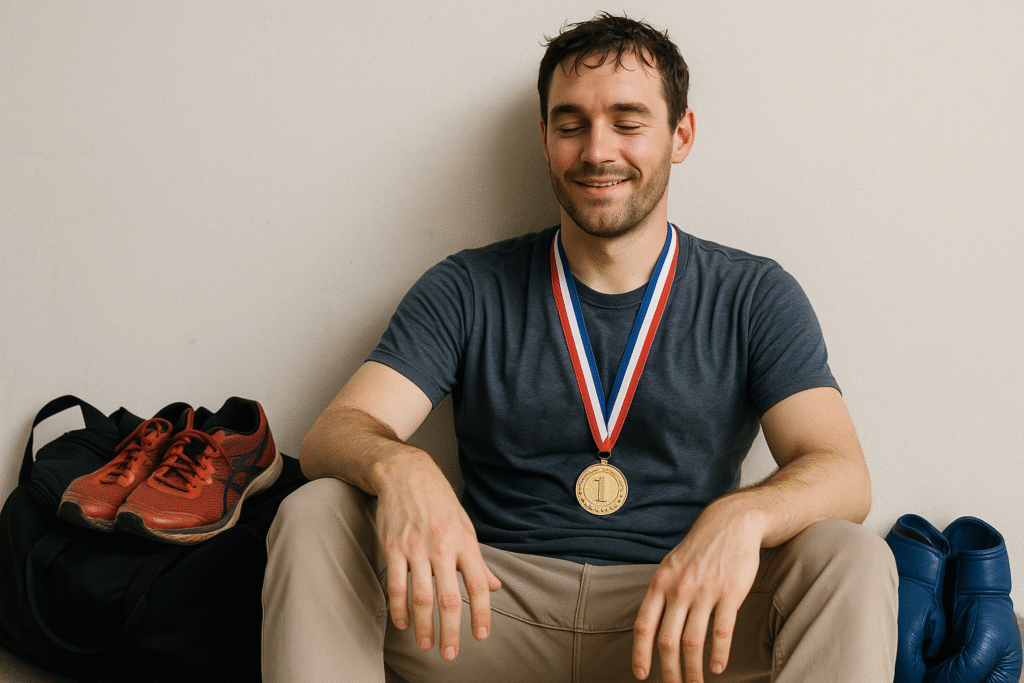
Plan your post-competition recovery phase before the meet to avoid burnout and maintain long-term progress. Take 1-2 weeks of complete rest from heavy lifting, focusing instead on light movement, mobility work, and mental recovery from competition stress.
Use this period to reflect on your peaking process, identifying what worked well and areas for improvement in future competition preparations. Document your experiences while they’re fresh to improve future peaking cycles.
Gradually return to normal training volumes and intensities, allowing your body and mind to adapt back to regular training demands without rushing the process.
Conclusion
Successful powerlifting competition requires more than just strength – it demands strategic preparation that optimizes your body’s ability to express that strength when it matters most. The peaking process provides a systematic approach to competition preparation that maximizes your chances of achieving personal records while minimizing the risk of injury or burnout.
Remember that peaking is both an art and a science. While the principles remain consistent, individual responses vary, requiring you to adapt these guidelines to your specific needs, experience level, and competition goals. Start with conservative approaches and refine your peaking strategy based on competition results and training responses.
The investment in proper peaking preparation pays dividends not just in competition performance, but in developing the discipline, self-awareness, and strategic thinking that characterize successful competitive powerlifters. Master the peak, and you master the platform.
FAQs
Q. How long should I peak for my first powerlifting meet?
A. For first-time competitors, a 4-week peaking phase is ideal. This provides enough time to reduce fatigue and practice competition commands without overthinking the process. Experienced lifters may extend this to 6 weeks, but beginners benefit from keeping it simple and shorter.
Q. Can I still do accessory work during the peaking phase?
A. Yes, but drastically reduce the volume. Focus only on accessories that directly support your competition lifts, such as pause bench press for bench press competition or competition-style deadlift variations. Eliminate all non-essential movements like arm curls or lateral raises.
Q. What if I feel weak during the peaking phase?
A. Feeling slightly “off” or weak during weeks 2-3 of peaking is normal and expected. This is your body adapting to reduced training volume. Trust the process – most lifters report feeling stronger and more explosive in the final week before competition.
Q. Should I test my max during the peaking phase?
A. No, avoid testing true 1RMs during peaking. Instead, work up to openers and second attempts (90-102% of current max) to gauge readiness. Save your maximum efforts for competition day when you’re fully peaked and ready to perform.
Q. How do I adjust my peaking if I’m cutting weight for a meet?
A. Start your weight cut earlier in the peaking timeline (week 1-2) rather than during the final weeks. Maintain higher carbohydrate intake during the last week to support performance. Consider working with a sports nutritionist for safe weight cutting strategies.
Q. What should I do if I get sick during the peaking phase?
A. Prioritize recovery over training. Take complete rest until symptoms resolve, then return gradually with reduced intensity. If illness occurs in the final week, focus on maintaining movement patterns with very light weights rather than complete rest.
